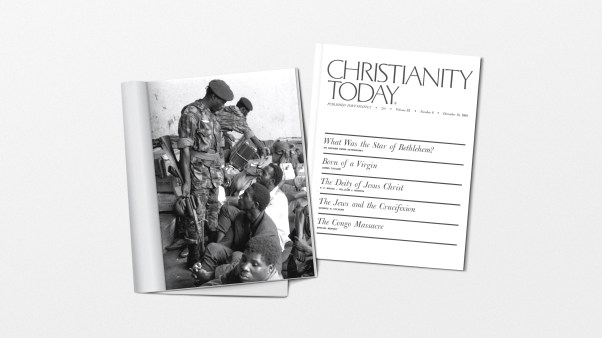In this series


For over 50 years, the term unreached people groups has shaped evangelical missiology. First gaining traction in the 1970s through the work of US missiologist Ralph Winter, the concept is “arguably the most significant thought innovation in twentieth century missiology,” according to mission mobilizer Leonard Bartlotti.
The term offers a compelling and convicting framework: Go where the gospel hasn’t gone, reach those who’ve never heard, and prioritize peoples without a local, witnessing church. Many, myself included, were awakened to a world in desperate need of more cross-cultural witnesses and to the centrality and primacy of the church’s global calling to missions.
But the world is being rapidly transformed by globalization, urbanization, migration, and digital connectedness. We can no longer agree on one singular definition of the term in question. In an environment where digital connectivity thrives, it feels outdated. We need to recalibrate our understanding of unreached people groups, recognizing its enduring strengths alongside its growing limitations and keeping before us the urgent biblical mandate to bring the gospel to those with little or no witness in their midst.
Part of the enduring appeal of unreached people groups lies in its simplicity. Amid so much that is complex, confusing, and contested within the academic and applied field of global missiology, this cuts through with clarity: Count the unreached, identify the most pressing needs, go to them, and finish the task. Each congregation has finite resources of time and money with which to effectively engage global religious realities. In this way, unreached people groups communicates opportunity, stirs prayer, and inspires action. It has helped countless evangelicals to pray, give, and go, especially toward nonbelievers residing in the “10/40 Window,” a region stretching from Morocco to Japan.
But problems arise when a useful tool becomes an unquestionable framework, especially if it dictates resource allocation and shapes strategy. We must be honest about the limits of its original definition and recognize that some of its built-in assumptions about people and place are starting to show wear and tear.
When Winter first directed evangelical attention toward unreached people groups, or “separate peoples,” at the first Lausanne congress in 1974, just over a third of the population worldwide lived in cities and around 84 million people lived outside their birth countries. But today, growing masses of people are migrating to sprawling urban hubs. Well over half the world’s population lives in cities, and more than 300 million people live as international migrants scattered across the globe.
In cities, cultures mingle, identities shift, and micro-communities form along lines of interest and worldview. As more people move to urban centers that increasingly look alike and as they consume similar food and pop culture trends, there are more points of commonality among peoples of different cultures and ethnicities than ever before. These migratory urban settings defy easy ethnolinguistic categorization, posing a challenge to the “people group” paradigm.
The term further breaks down when we consider contexts of multiple, mixed, or “hyphenated” identities; intercultural marriages; and hybridization where “language and cultures collide to give birth to new ones,” Vietnamese missions researcher Minh Ha Nguyen writes in an essay in the book People Vision: Reimagining Mission to Least Reached Peoples.
Technology-driven globalization has also changed how we understand people and place. A 17-year-old in California, a 17-year-old in Nairobi, and a 17-year-old in Mumbai may increasingly share digital habits, reference points, and forms of cultural expression. They may feel that they have a stronger common identity with one another through a global language like English than with a grandparent living a few miles away.
In situations where language barriers persist, the rapid development of AI translation tools means it is no longer unimaginable that worldview-level discourse across linguistic divides may someday be within easy reach of us all.
This doesn’t mean that people groups no longer matter or that we need to retire the term unreached people groups. But it means that people group thinking must adapt.
Mission strategies that cling too rigidly to fixed, inherited categories of people and place may miss emerging relational and cultural pathways through which people are coming to faith. Billions worldwide now have access to gospel materials in their own languages through smartphones. If calling groups “unreached” depends on their access to contextually and linguistically appropriate gospel communication, the activities of digital missionaries could rewrite the definition of unreached.
Can hearing the Good News through a social media ad or an AI-driven tool really count as reaching people who are “unreached” and helping them engage with the gospel? Surely, someone who casually scrolls past a Christian social media post or argues with a chatbot about matters of the faith should not be considered “reached” compared to someone who has a sustained, prayerful, face-to-face conversation with a vernacular-speaking believer.
Still, we must contend with ever-evolving migration patterns and rapid technological changes in our outreach. We need a messier missiology. If unreached-people-group thinking once gave us urgency and clarity, today’s world requires us to have flexibility and imagination. Gospel opportunities can appear unexpectedly, like talking about Jesus with a stranger through a game or inviting an overseas friend to a virtual Bible study with real-time translation.
Ecclesiastes exhorts us to “sow your seed in the morning, and at evening let your hands not be idle, for you do not know which will succeed” (11:6). We are called to share the Good News widely, trusting God to bring fruit and confident that the Lord of the harvest is still gathering people to himself. To recalibrate our understanding of unreached people groups is not to dilute our passion for mission but to deepen it.
Chris Howles served at Uganda Martyrs Seminary in Kampala between 2011 and 2023 and is now the director of cross-cultural training at Oak Hill College in London.


















